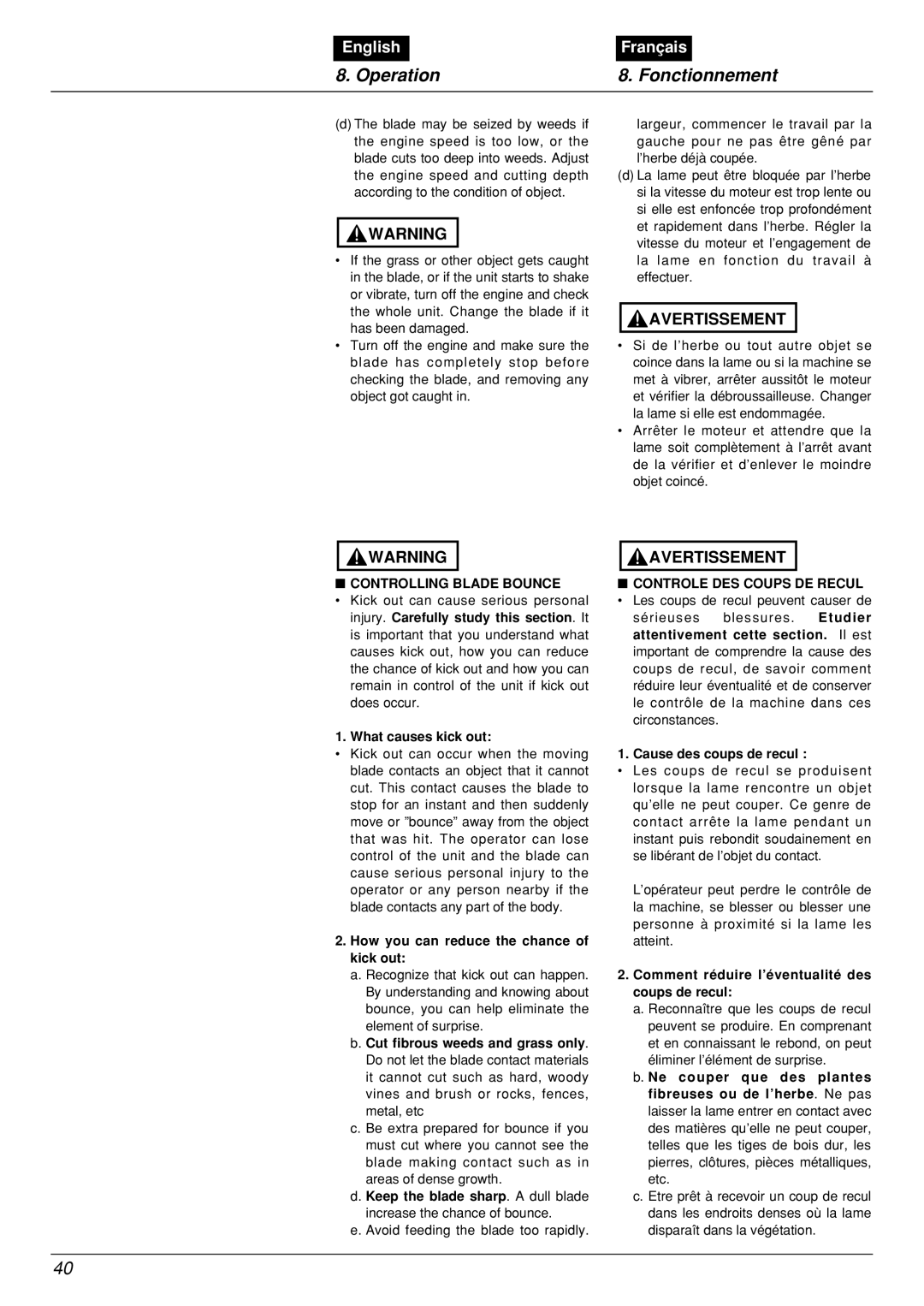BCZ2600DL specifications
The Zenoah BCZ2600DL is a high-performance brush cutter designed for both professional landscapers and dedicated home users. This powerful tool combines efficiency with ergonomic design, making yard work not only effective but also manageable and comfortable. Its robust engine, advanced features, and user-friendly interface all contribute to its stature as a leading choice in the market.At the heart of the BCZ2600DL lies a reliable 25.4cc, two-stroke engine that delivers impressive power while remaining lightweight. This engine is engineered for fuel efficiency, reducing the environmental impact and allowing users to work longer without frequent refueling. The tool is designed for easy starting, thanks to a convenient primer bulb and an advanced ignition system that ensures reliable performance in various conditions.
One of the standout features of the BCZ2600DL is its unique Anti-Vibration System. This technology minimizes vibrations during operation, significantly reducing user fatigue and allowing for longer work sessions without discomfort. The ergonomic handle design further enhances comfort, giving users better control and reducing strain on the arms and shoulders.
The brush cutter is equipped with a dual-line bump feed head that allows for quick and easy line advancement, making it ideal for trimming grass and clearing weeds. The 26.2cc engine provides enough power to tackle tougher vegetation, including brush and dense undergrowth, making it versatile for various landscaping projects. Additionally, the heavy-duty cutting attachment ensures durability and longevity, even under rigorous usage.
Another remarkable characteristic of the Zenoah BCZ2600DL is its lightweight construction. Weighing in at around 10 pounds, it is easy to maneuver, making it perfect for both professional landscapers who need to cover large areas and homeowners tackling smaller jobs. The detachable shaft allows for compact storage and easy transport, another plus for users on the go.
In terms of safety, Zenoah has integrated several features to protect users while working. The throttle trigger is equipped with a safety lock, preventing accidental starts, and the exhaust system is designed to minimize emissions for a cleaner environment.
In summary, the Zenoah BCZ2600DL brush cutter stands out in the outdoor power equipment market due to its combination of a powerful yet fuel-efficient engine, comfort-driven designs, advanced technologies, and user-friendly features. Whether you're trimming your backyard or tackling a more extensive landscaping job, the BCZ2600DL is built to meet and exceed expectations.

